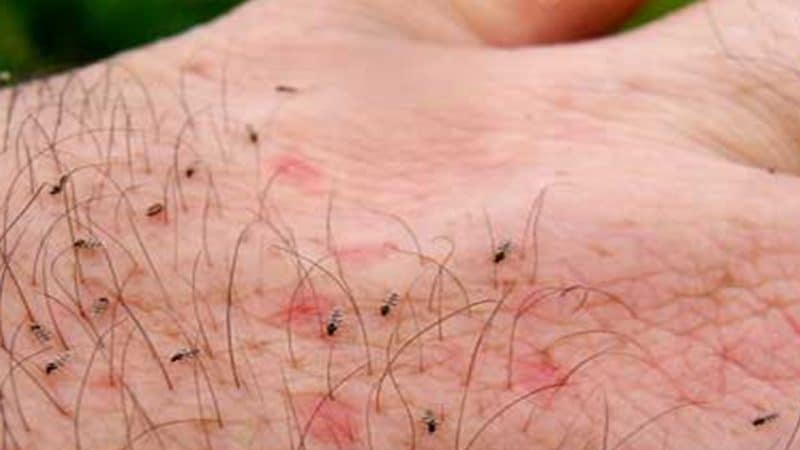A fly circling around you is annoying enough. A swarm of flies is even more irritating. What if they bite? That would be alarming. Biting flies are a health hazard because they feed on blood and some of them carry diseases. If they do bite, you need to know what to expect and how to treat it, below are the details.
Sandfly bites
Sandflies are 1/8 of an inch in length with brownish-gray and hairy wings. They often hold their wings above their bodies in the shape of a “V”. Most of them are active from dusk until dawn. A sandfly often eats sap and nectar. A female one will feed on the blood of humans and animals.

Sandfly bites appear as red blisters and bumps. They are painful as well. These bites can become infected. They could even cause dermatitis or skin inflammation. A sandfly can transmit leishmaniasis. You can contract this illness if you do not have a vaccine for it. Treating the bites with calamine lotion or hydrocortisone can help reduce the itching or help them heal. Aloe vera and oatmeal baths can also help soothe the itchiness. Persistent ulcers and sores will need medical attention.
Tsetse fly bites
This fly is about six to 16 millimeters long. Its mouth points forward. It is found in the African tropics, fond of shady areas in the woodlands. It tends to hide between tree roots and in the holes of tree trunks. The bite of this fly is painful and produces tiny red ulcers at the bite site. It causes sleeping sickness in humans and animals. Seeing a doctor is vital in treating these bites. The doctor will perform blood tests and prescribe anti-trypanosomal medications for the sleeping sickness.
Biting midges bites
The bites from these midges are tiny at about one to three millimeters in length. The adults can turn reddish after eating. They are gray when they have not. Their white larvae can only be spotted with a microscope. The bites are itchy and feel as if something is biting the skin. This can result in skin lesions and dermatitis. It is best not to scratch the bites. Applying topical steroids or cortisone can help. Aloe vera can also help.
Deer fly bites

These flies are about ¼ to ½ of an inch long. They have brownish-black bands on their transparent wings. Their eyes are small are green or gold, on round heads. They are most active during spring. They also like to be near bodies of water like lakes or swamps. Deer fly bites are painful. They produce welts or red bumps. A deer fly can also cause tularemia or rabbit fever. It can be fatal without treatment. Antibiotics can treat these bites. Placing ice on the bites can treat the pain. Taking diphenhydramine can reduce the itchiness.
Black fly bites
These flies are small, five to 15 millimeters in their adult stage. Their antennae are short and their thoracic region is arched. Their wings are fan-shaped and large. The larvae of black flies are found near bodies of water. A black fly can cause river blindness. Black flies often bite near the face or head. The small puncture wound can swell up to the size of a golf ball. The bite can cause fever, swollen lymph nodes, nausea, and headache. These symptoms indicate black fly fever. Applying ice for fifteen minutes can reduce the swelling. Applying topical steroids and cortisone can reduce the swelling. Cleaning the bite area with clean water and soap can lower the risk of getting an infection.
Stable fly bites

These flies are five to seven millimeters. They have about seven round spots in a checkerboard pattern. These spots are on their abdomen. These flies often frequent livestock. Stable flies in the United States are often located along shorelines, the Florida panhandle, and the Tennessee Valley. Stable flies have sharp needle pricks for bites. They often target ankles, legs, feet, and the area behind the knees. The rashes are small bumps that are red and raised. Applying ice to the bite can reduce pain. Diphenhydramine can reduce itching and swelling.
Preventing fly bites
The prevention of fly bites is better than going through the pain, annoyance, and itchiness. All you need to do is make your premises less inviting to these biting flies. Keeping the plants and grass well-trimmed is part of the preventive measure. If you plan to go to an exotic location, you may want to visit your doctor and ask about the medications or vaccines you may need before you leave. Once you experience symptoms, seeing your doctor right away is necessary.